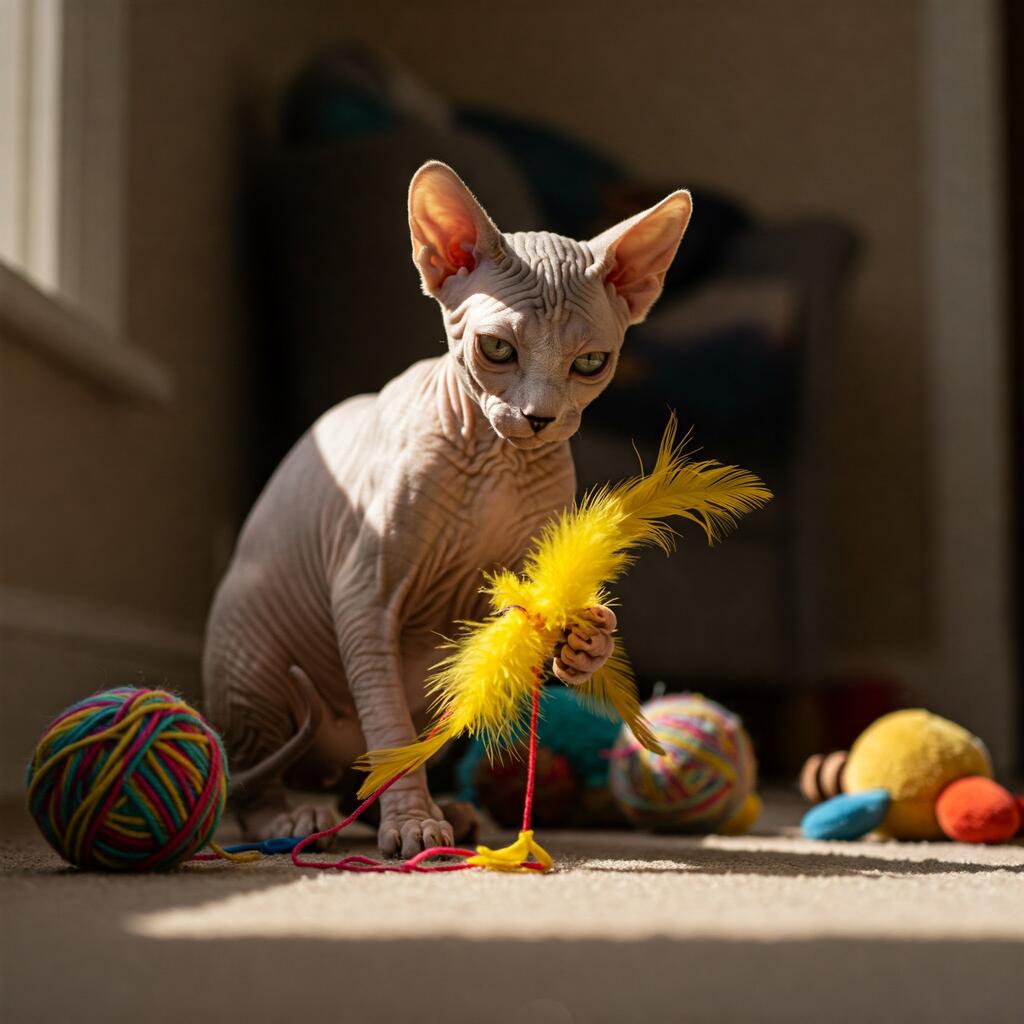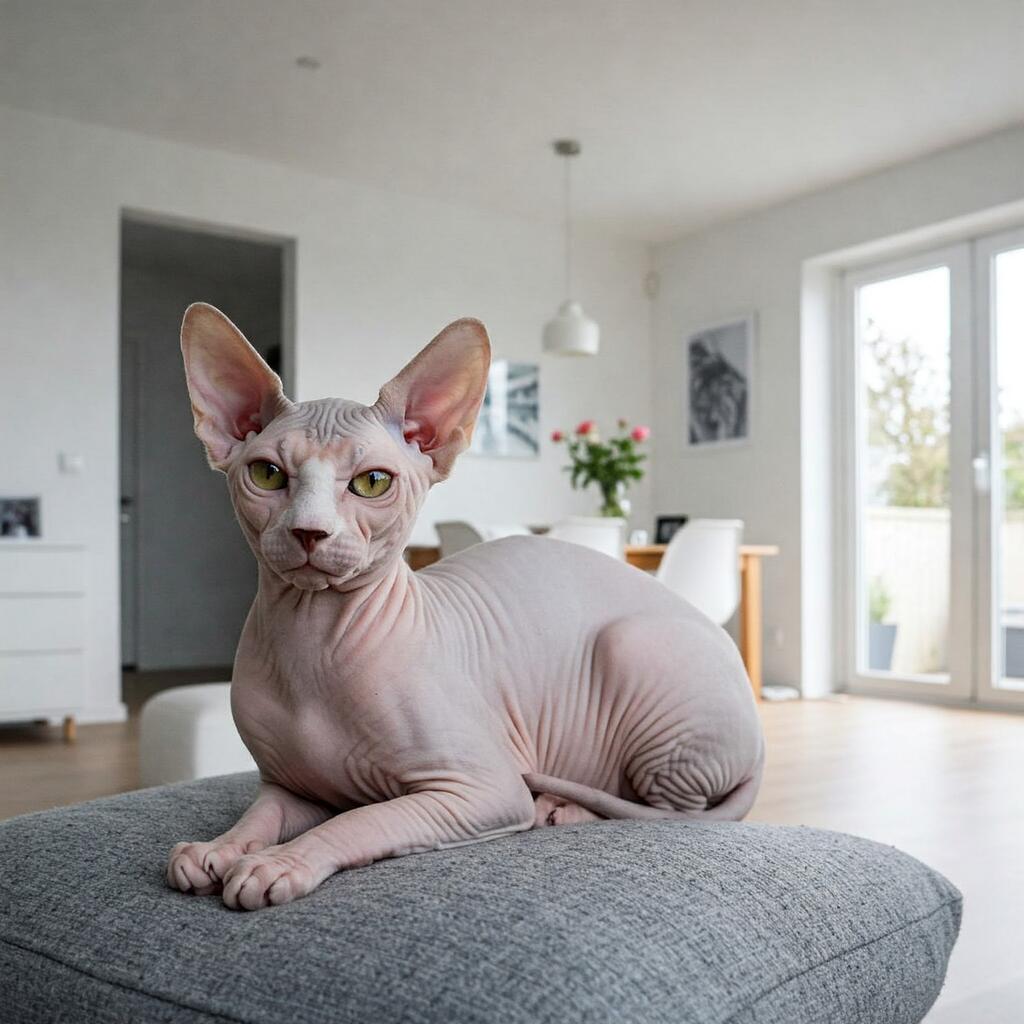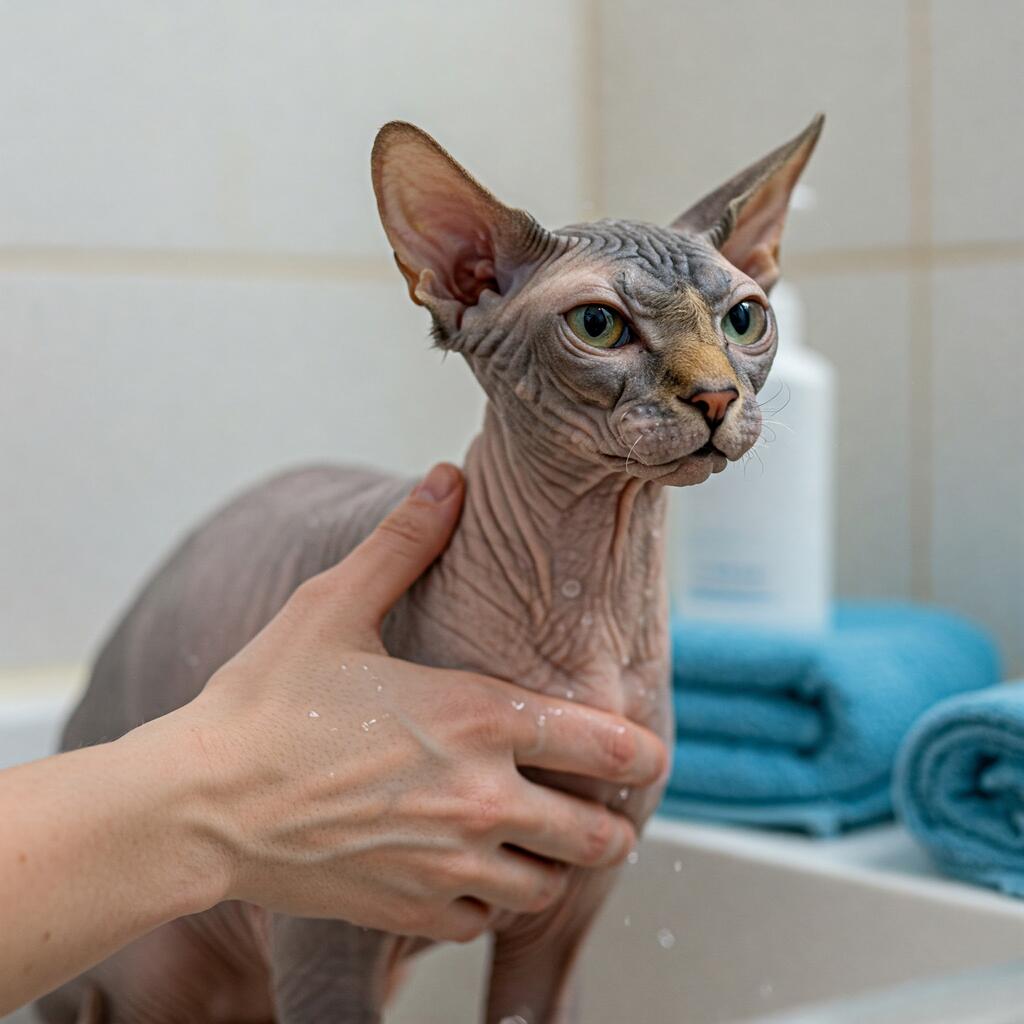
The Unique Appearance of the Peterbald Cat Breed
The Peterbald cat is a very young and still very rare breed. The birth of the first Peterbald litter is only dated 1994 and took place in Russia, in Petersburg by a Russian breeder Olga Mironova and a feline and genetics expert Tatyana Komarova. Cats of Don Sprynx, Siamese and Oriental breeds were mated. The aim was to create a cat with the elegance and refinement of the Siamese and Oriental and the almost hairlessness of the Sprynx.
Initially this new breed was called the Petersburg Sphynx, and only later did it assume its present name of Peterbald (bald in English), it is also called the naked Siamese.
Character of the Peterbald Cat

It is not a cat for those who would like a kitten always curled up on the sofa, in fact it is very active and athletic. His human must have time to spend with him, to let him play and keep him active. He is therefore a feline who does not like loneliness and suffers greatly if he is left alone for any length of time. If you really can't spend much time with this cat, it is definitely worth getting another cat or even a dog, as he gets on very well with both of them and they would keep each other company.
He is considered to be a little clingy because he always seeks human contact and caresses and does not hesitate to ask for them by meowing softly and very loudly. He has the intelligence typical of the Siamese and also his hyperactivity. He learns commands and calls very easily, he can be taught games such as retrieving, with children he has a lot of patience and is an excellent playmate.
He is very active, an agile jumper, and can often be found climbing on high furniture. He is also very curious, so there is no corner of the house that is not explored daily. Due to his lack of fur he is always looking for a warm place, he loves to be wrapped up in blankets or have jumpers to wear. He is also very warm to the touch, like a living warmer.
Although it is very energetic and agile, it is a cat that adapts very well to living in a flat, as long as it has the opportunity to play and not get bored.
Appearance of the Peterbald Cat

It is a medium-sized cat, reaching a maximum of 5 kilograms, the female being slightly smaller. The paws are long, fine and proportionate to the body, the tail is quite long, and curled at the top.
The head is medium-sized, triangular, longer than wide with large, triangle-shaped ears with a rounded tip. The eyes are almond-shaped, very expressive and blue or green in colour.
Its main characteristic is its coat, the hair of which is almost completely absent, at most a slight fluff. The skin is soft and velvety to the touch, with many wrinkles all over the cat's body. The coat colours of the Peterbald cat can be of all types, including white.
Care and health of the Peterbald Cat

It is a cat that suffers from low temperatures, so in winter it is good to keep it covered and warm. As far as its diet is concerned, being a very lively and hyperactive cat, it needs to eat more than other cats; however, it is a good idea to monitor its diet as it tends to eat even more than it needs.






















